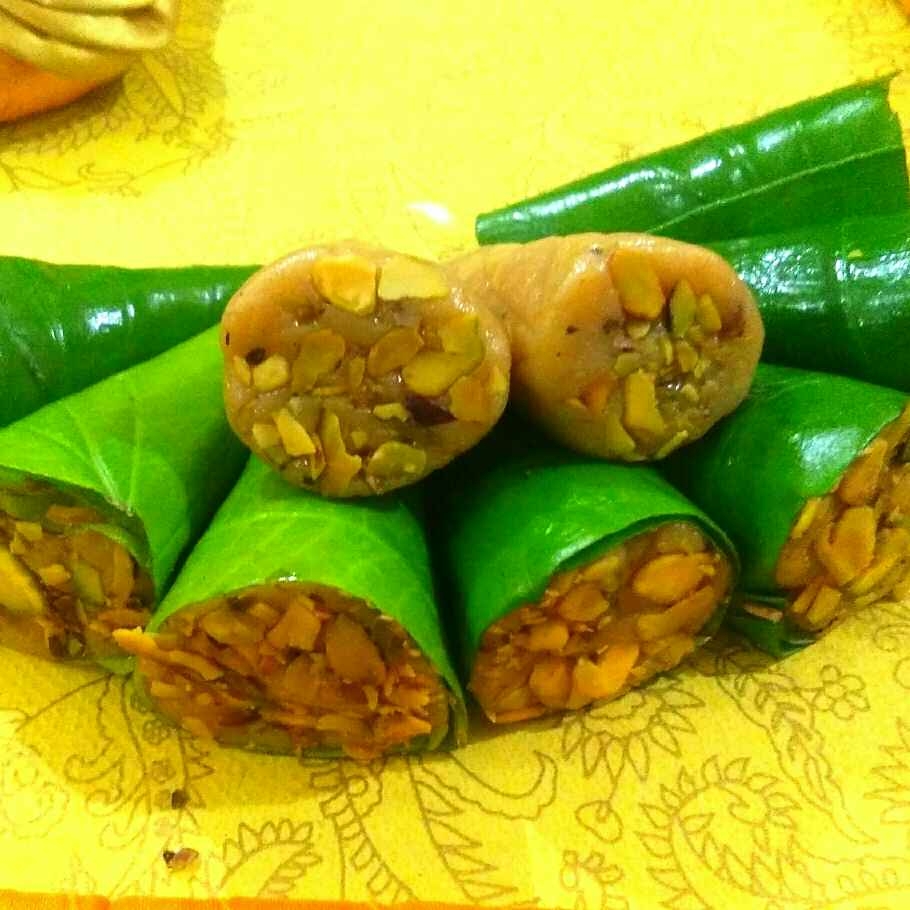Singori: Pahadi Mithai, Dil Se! (Sweet From the Hills, From the Heart!)
Namaste Doston! Kem cho? Sat Sri Akal! Chef Curry Do’pyaza here, back in your kitchens with a sweet treat that’s close to my heart. Today, we are diving into the world of Singori, a delicious and simple sweet from the Kumaon region of Uttarakhand, nestled in the majestic Himalayas.
Think of Singori as a sweet hug from the mountains – pure, comforting, and utterly delightful.
When Do We Eat This Sweetness?
Singori is more than just a dessert; it’s a celebration! You’ll find it gracing tables during festive occasions like Diwali, Holi, and weddings. It is also a popular sweet to share with loved ones during the cool winter months. The aroma of roasted khoya and the earthy fragrance of the maalu leaf make it a truly special treat. It is also a common offering in local temples.
A Little History Lesson (Don’t Worry, It’s Short!)
Singori has been a part of Kumaoni culture for generations. It’s a testament to the ingenuity of the people who used locally available ingredients to create something so delicious. The maalu leaf, a unique and fragrant leaf found in the region, is integral to the flavor and presentation of Singori. The recipe has been passed down through families, each adding their own special touch.
Let’s Get Cooking!
Preparation Time: 10 minutes
Cooking Time: 20 minutes
Ingredients You’ll Need:
- Khoya/Mawa (Dried Evaporated Milk Solids): 250 grams, crumbled. Use good quality khoya for best results.
- Cheeni (Sugar): 50 grams, powdered. Adjust to your sweetness preference.
- Elaichi Powder (Cardamom Powder): 1/4 teaspoon, freshly ground for maximum fragrance.
- Maalu Leaves: As needed. These are large, heart-shaped leaves. If you can’t find them, you can use parchment paper or banana leaves as a substitute, but the flavour will be different.
Step-by-Step Instructions:
- Roast the Khoya: In a heavy-bottomed pan or kadhai (wok), crumble the khoya and place it over medium heat. Keep stirring continuously to prevent it from sticking and burning. The khoya will start to melt and release its fat.
- Continue Roasting: Keep roasting the khoya until it turns a light golden brown color and starts to give off a nutty aroma. This should take about 15-20 minutes.
- Add the Sugar: Remove the pan from the heat and add the powdered sugar and cardamom powder. Mix everything together well until the sugar is completely dissolved and the mixture is smooth.
- Cool it Down: Let the mixture cool down completely. This is important, or the Singori will be too soft to handle.
- Shape and Wrap: Once the mixture is cool enough to handle, take a small portion (about 2 tablespoons) and shape it into a cone or pyramid.
- Wrap in Maalu Leaves: Carefully wrap the shaped khoya mixture in a fresh maalu leaf, securing it tightly. Repeat with the remaining mixture.
Chef Curry’s Tips for Singori Perfection:
- Khoya Quality is Key: Use fresh, good-quality khoya for the best flavor and texture.
- Roasting Patience: Don’t rush the roasting process. Roasting the khoya properly is crucial for bringing out its nutty flavor and preventing the Singori from being too sticky.
- Cooling is Crucial: Make sure the mixture is completely cool before shaping and wrapping.
- Sweetness Adjustment: Feel free to adjust the amount of sugar to your liking.
Cooking Variations:
- Gas Stove/Induction Stove: The traditional method, as described above, works perfectly on both gas and induction stoves.
- Microwave: You can microwave the khoya to soften it, but it’s not recommended for roasting. It’s best to roast it in a pan for the authentic flavor.
- Oven: Roasting the khoya in the oven is not recommended.
Nutritional Information (Approximate, per serving):
- Calories: 150-200
- Fat: 10-15g
- Carbohydrates: 15-20g
- Protein: 5-7g
Serving Suggestions:
- Serve Singori chilled or at room temperature.
- Enjoy it as a dessert after a delicious Indian meal.
- Pair it with a cup of hot chai or coffee.
- It makes a wonderful gift for friends and family.
A Final Word From Your Chef:
Singori is a simple yet incredibly satisfying sweet. It’s a reminder that the best things in life are often the simplest. I urge you to try this recipe at home and experience the magic of Kumaon right in your kitchen. Share this sweet treat with your loved ones and spread the joy!
Until next time, happy cooking!
